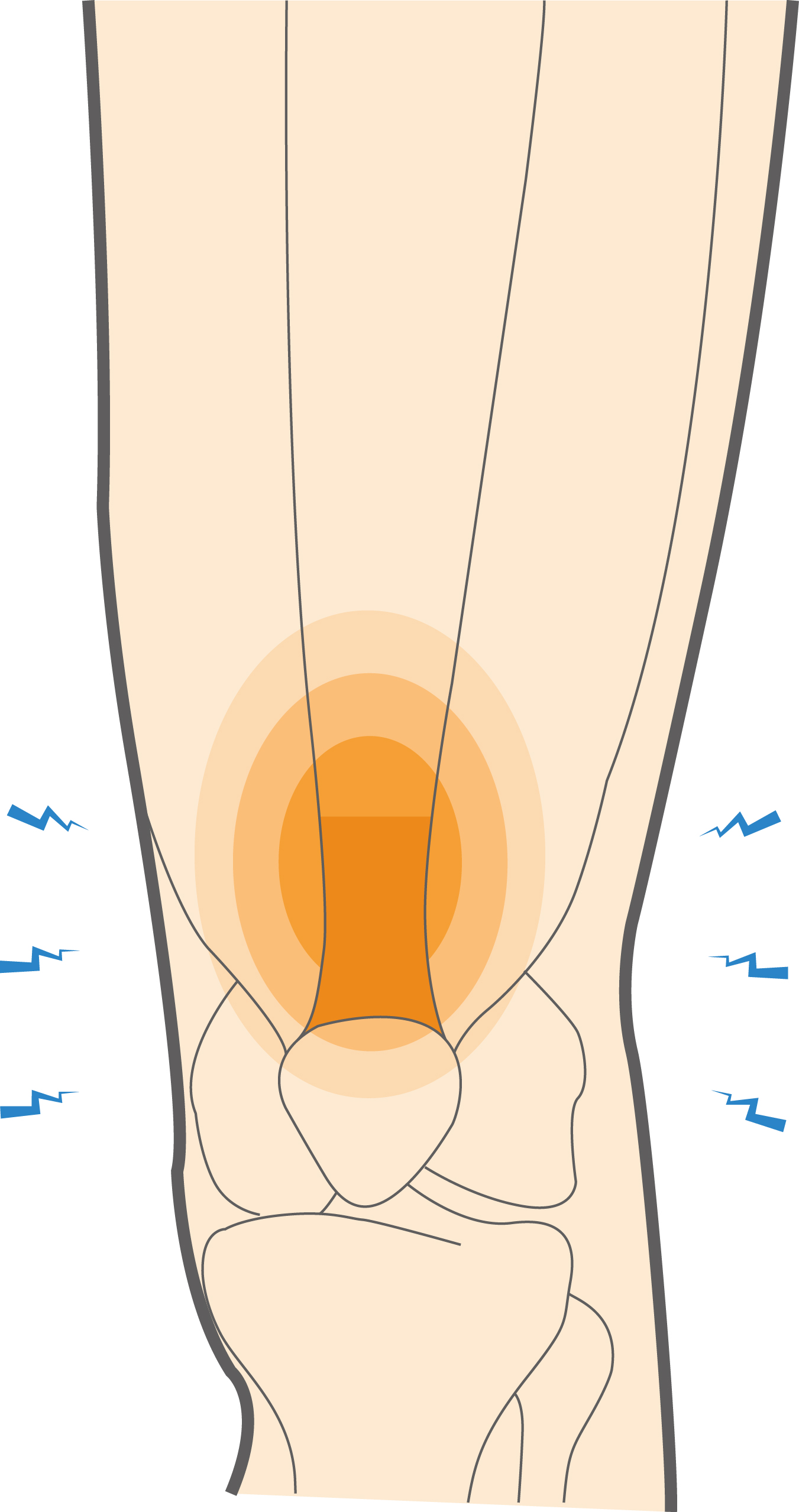The quadriceps tendon is a band of fibrous tissue that connects the top of the kneecap (the patella) to the quadriceps muscles (the four muscles at the front of the thigh). The quadriceps are involved in all movements that involve straightening the knee, like jumping, kicking, and running. The quadriceps tendon can become painfully inflamed due to overuse in sports, a condition called quadriceps tendonitis.
Quadriceps Tendonitis Causes, Symptoms & Treatment Options
Quadriceps tendonitis is a common overuse injury that affects the knee extensor tendon—a fibrous band connecting the quadriceps muscles in the front thigh to the top of the kneecap (patella). These muscles are crucial in straightening the knee during running, jumping, or kicking. Repetitive strain from athletic activities can inflame the tendon, resulting in front thigh pain and discomfort above the knee.
Overview
Overview

What causes Quadriceps Tendonitis?
Quadriceps tendonitis is usually an overuse injury that occurs most often in sports that involve jumping. It can be caused by repeated stress on the quadriceps tendon during practice and play, especially without a proper warm-up routine or if you suddenly increase the intensity or duration of your practices. Quadriceps tendonitis may occur more frequently in older athletes.
Quadriceps tendonitis is common in these sports:
• Running
• Basketball
• Soccer
• Volleyball
• Track & field (especially long jump and high jump)
Symptoms
Quadriceps tendonitis causes pain just above the kneecap. Specifically, athletes with quadriceps tendonitis may experience:
• Pain that is worse with activity
• Pain when straightening the knee from a bent position
• Pain with running or jumping
• Stiffness or tightness in the front thigh
When to see a doctor
If you have pain above your kneecap that doesn’t improve, visit your doctor to check quadriceps tendonitis treatment options. They will ask questions about your symptoms and examine your knee to determine whether quadriceps tendonitis is responsible for your pain or if you may have a more serious injury. The physical exam will include checking the range of motion in your knee and assessing tenderness around your knee. Your doctor may also ask you to extend your leg in front of you while sitting to check your quadriceps tendon function. Sometimes, your doctor will order an x-ray to rule out a fracture or an MRI to check for a quadriceps tendon tear.
Non-operative treatment
Quadriceps tendonitis is always treated non-operatively. Conservative quadriceps tendonitis treatments include:
• Rest from your sport
• Icing above the knee to reduce inflammation
• NSAIDs (nonsteroidal anti-inflammatory medications like aspirin) to relieve pain
• Taping your knee or using a brace
• Physical therapy, including stretching and strengthening exercises for the quadriceps tendon
If your symptoms persist with these conservative treatments, your doctor may offer an injection of platelet-rich plasma (PRP).
Try these exercises to help address your condition:
Below is a PDF of the Exercise Program
Recovery
Most athletes have a relatively quick recovery after quadriceps tendonitis. The best things you can do to get back in the game sooner are to identify quadriceps tendonitis early, give yourself adequate rest from your sport, and adhere to physical therapy recommendations. It’s important to wait to be pain-free before you begin play. To avoid a quad strain, focus on warm-up and stretching before and after play.
GET BACK TO WHAT YOU LOVE. FASTER
Frequently Asked Questions
What causes Quadriceps Tendonitis?
- Overuse in sports (volleyball, soccer, running) with sudden jumps, pivots, or sprints.
- Training errors: Excessive intensity, frequency, or duration.
Does compression help?
Yes—a quad-specific brace or sleeve provides cushioning, stability, and faster recovery by reducing tendon strain.
How to prevent Quadriceps Tendonitis?
- Space out high-impact training (running/jumping) from heavy strength sessions.
- Gradually increase activity to avoid tendon overload.
- Strengthen quads & hips to improve load distribution.
What are the early signs of quadriceps tendinopathy?
Early signs include pain and tenderness in the front of the knee, especially when climbing stairs, squatting, or after intense physical activity. You may also feel stiffness or discomfort during movement.

